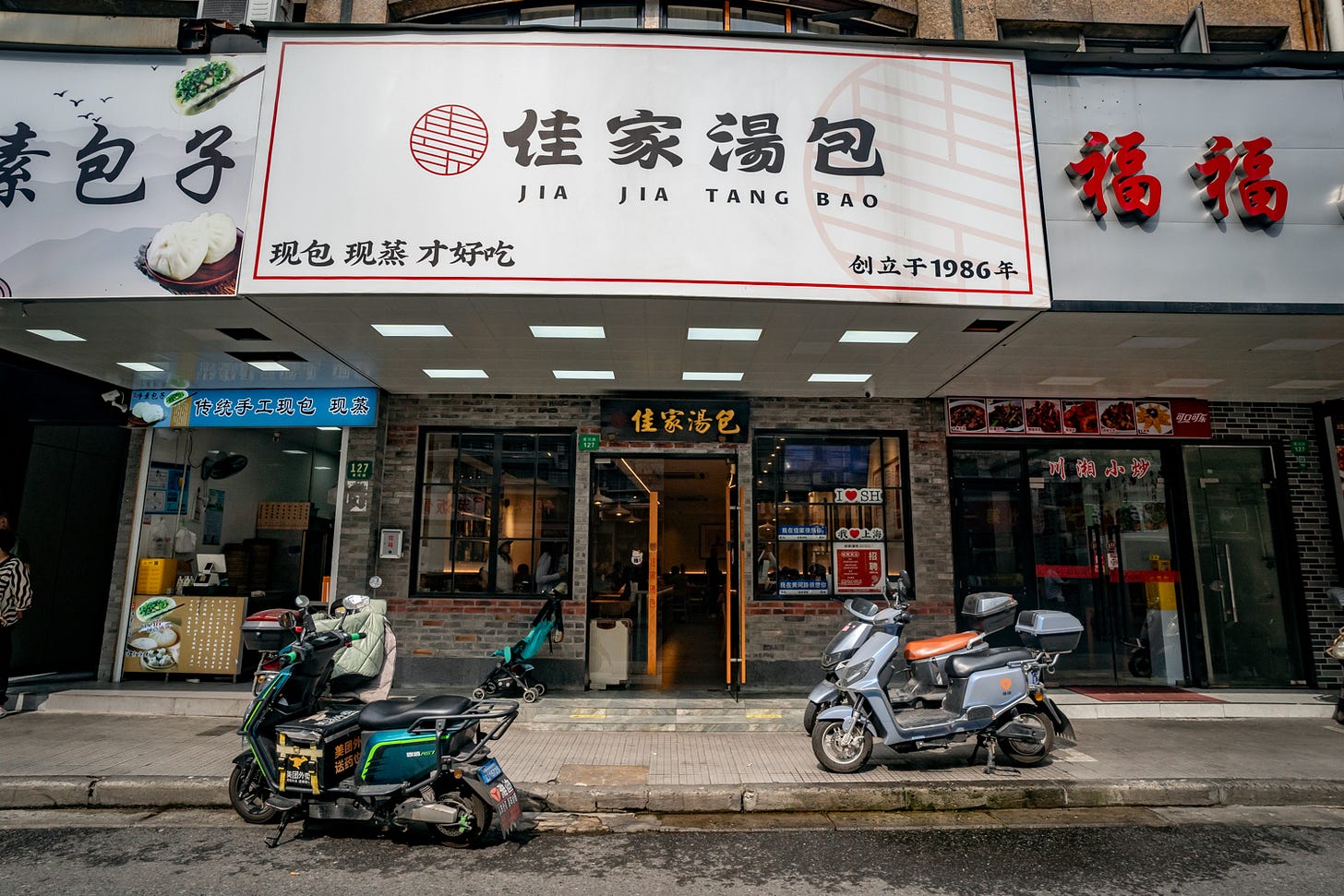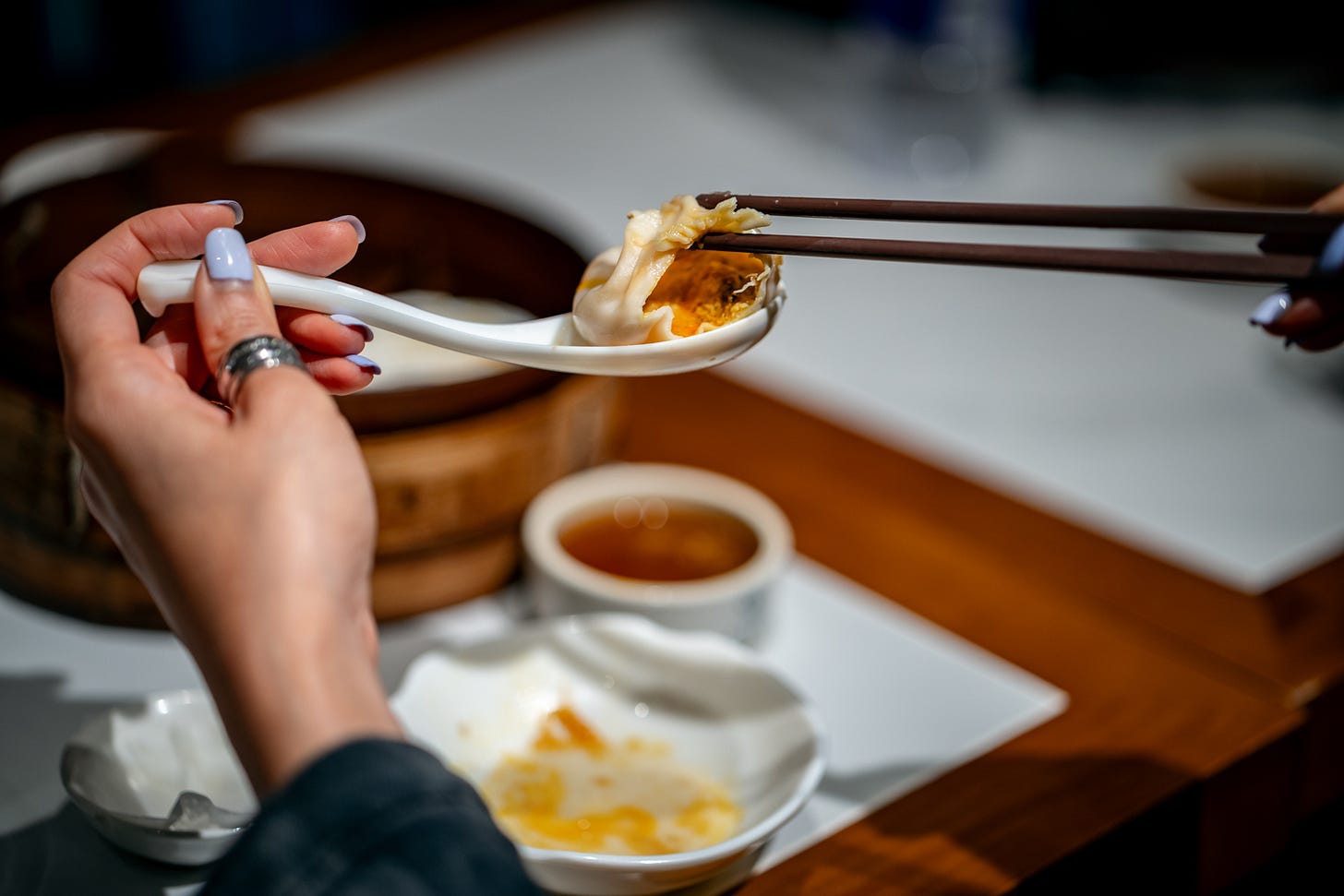Basket Case
Food writer and one-time chef Chris St Cavish leads me on a xiao long bao tour, where we discover how the famed soup dumpling can help tell the story of modern Shanghai
Emerging from People's Square metro station, blinking in the sudden daylight of early morning, my eyes are immediately drawn to the spiky peaks of the Park Hotel, a gothic edifice of dark brown brick that was the tallest building in Asia for some 30 years, after its completion in 1934. At its foot, I spy a small figure wearing black and white stripes, waving me across the road. Greeting me with a hearty handshake, he declares, “Simon, welcome to the center of Shanghai!”. Meet Chris St Cavish, one time chef, respected food writer, restaurant consultant, and my foodie tour guide for today.
A resident of Shanghai since 2005, Chris originally arrived in the city as a junior chef for the opening of Jade on 36. A culinary revolution for Shanghai when it arrived, this molecular gastronomy restaurant atop the Pudong Shangri-La hotel, helmed by wunderkind Paul Pairet, served astonishing dishes - so much so, when I reviewed it for the city magazine I was working for at the time, I had no idea how to eat each course. “I didn't really know either!” laughs Chris, as I relate how our paths had crossed - albeit indirectly - many years before, him in the kitchen, me out front.
Today though, we're headed out in search of more humble but no less worthy cuisine - Shanghai's famed xiao long bao. These little soup dumplings (the name translates as ‘little basket bun’) are synonymous with the Chinese city, and we've timed our trip in tandem with 'hairy crab' season, crustaceans harvested from lakes to the west, with the roe and rich meat then wrapped up into luscious bites. Our first stop is Jia Jia Tangbao, where we immediately delve into what makes the perfect xiao long bao.
“At this restaurant they’re known for making every order fresh - they're not pre-made,” explains Chris. “That’s why you may have to wait a little for your order, but it's always worth it.” We fill in the time with the story of the owners' journey since they first opened in the 1990s, a tale of luck, opportunism, hard graft and a laser focus on pure quality. Mid-conversation, two baskets of steaming dumplings are placed on our table, and we immediately fall to dissecting the food in front of us. Quite literally.
Back in 2015, a decade into his time in the city, Chris embarked on the unlikely quest to find the 'best' xiao long bao in Shanghai. But not for him subjective terms like taste and flavor. Instead, calipers in hand, he set out to judge 52 xiao long bao purveyors by three categories: thickness of skin, size of the meat filling, and quantity of the soup.
Meticulously measured, he put his findings into a chart, which became an instant cause celebre in Chinese media, fascinated with this foreigner's unexpected quest. He sold the charts for a while, but eventually moved onto other projects - returning to the dumplings only on his food tours, where he goes deep into niche areas of Chinese cuisine. Today it's soup dumplings, and we're already off to our next destination.
As the sun disappears, the sky turns gray, and it starts to drizzle, we turn the corner to discover a queue of more than 100 people waiting at our next stop. Chris spies one of the owners on the street and asks him what's going on. After a quick discussion, Chris translates for me: “Apparently they've recently had a huge influx of Southeast Asians, perhaps influencer related.” Lucky for us the owner, friends with Chris, is able to squeeze us in the backdoor and we sit down for two baskets of crab xiao long bao.
Harvested from freshwater lakes located by the city of Suzhou - a few hours to the west of Shanghai - and further afield (watch his incredible video on the crab harvest above), hairy crab is a delicacy at this time of year, and so we order the normal and gourmet varieties, a luxury treat at RMB25 each (imagine paying three dollars for a dumpling!). The latter are rich beyond reason, and we do well to even eat two each.
The expert method, by the way, to eat xiao long bao, is to bite a small hole in the skin, and suck out the soup, before eating the dumpling. “You can also just eat the whole thing at once, but be wary of burning your mouth!” laughs Chris. It's obviously an acquired skill, as I variously squirt soup into my eye, on my shorts, and all over the table. I’m an obvious novice at this, but quickly learn to use the proffered spoon to hold the dumpling; after all, if the soup spills, it’s then all the easier to slurp it up.
We have another two stops on the morning's tour (including for the delicious pan-fried sheng jian bao, but I promised Chris I wouldn't reveal all. “They're not really secret or hidden away,” he comments, “but I want folks to come along with me for the full experience.” And what is that exactly? Well, you learn about the food, sure, but what you get on a Chris St Cavish food tour is a collection of stories, put together, that no-one else knows - on the chefs, the restaurateurs, the venues, the neighborhoods around them, which ultimately all combine to tell the story of modern Shanghai.
How the city was beat down after the end of the civil war in 1949, punished for its capitalist ways, closed off to the world for far too many decades, before remerging in the early 1990s, voracious for change, and through to the present day, retaking its place as one of the world's greatest cities. Of course, Chris doesn't put it in so many words - instead, he takes you through it, one delicious xiao long bao bite at a time.
Watch Chris’ ongoing hunt for the origins of xiao long bao in his superb video above.
St Cavish+Co offers personalized private Shanghai food tours, food and transport included. Contact for more info: stcavishandco.com / stcavish@stcavish.com / +86 139 1832 4475
See also: saintcavishfoodtours.com






